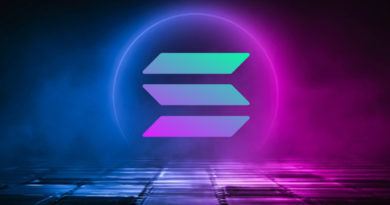Uncover the Advantages of Investing in Solana (SOL)
Solana (SOLana cryptocurrency) started in 2020 with a price under $1. By late 2021, it jumped to $258, showing its rapid growth. Now, Solana (SOL) is worth $150 and is among the top 10 cryptocurrencies.
Solana’s network can handle 65,000 transactions per second, costing less than a penny. It has over 595 million SOL coins in circulation and 260 apps built on it. This mix of speed and low cost has made Solana a leader in blockchain.
Key Takeaways
- SOL’s price surged from under $1 in 2020 to $258 by late 2021.
- It processes 65,000 transactions per second with fees below $0.001 per transaction.
- Solana ranks in the top 10 cryptocurrencies by market capitalization.
- Analysts project SOL could reach $3,200 by 2030, per CoinEdition.
- Its Proof-of-History technology reduces energy use to 658 joules per transaction.
What is Solana (SOL) and Why It Matters
Solana blockchain started in 2019 to solve blockchain’s speed and cost problems. It was co-founded by Anatoly Yakovenko. The mainnet launched in 2020, aiming to make decentralized apps scalable. The SOL token is its native currency, used for transactions and network governance.
The Origins of Solana
Solana Labs created the platform to tackle Ethereum’s congestion and high fees. By 2021, the SOL token’s value jumped 12,000%, showing investor trust. Today, over 5,100 projects use Solana, showing fast growth since its launch in 2020.
The Technology Behind Solana
Solana uses a hybrid consensus model with Proof-of-History (PoH) and Proof-of-Stake (PoS). PoH timestamps transactions without needing global coordination, while PoS secures the network. This setup allows up to 65,000 transactions per second, much faster than Ethereum’s 15 TPS. On high-speed networks, it can handle up to 28.4 million TPS.
| Feature | Solana | Ethereum |
|---|---|---|
| TPS | 65,000+ | 15 |
| Transaction Fee | $0.00026 | $0.30 |
| Consensus | PoH + PoS | Proof-of-Work |
Use Cases for Solana
Solana supports many applications: decentralized finance (DeFi), NFT marketplaces like Magic Eden, and play-to earn games. Its low fees are great for microtransactions and fast trading. Big crypto exchanges use Solana for its scalability, proving its innovation in blockchain.
“Solana’s speed and cost efficiency redefine what blockchain can achieve,”
This shows its technical advancements. Solana is a leader in blockchain evolution, from gaming to finance, making real-time applications possible.
The Speed Advantage of Solana
Solana news shows it’s a leader in transaction speed, a big factor in SOL price trends. It can handle up to 50,000 transactions per second (TPS). This is much faster than Bitcoin’s 7 TPS and Ethereum’s 15 TPS.
This speed is real and built into Solana’s design. It uses a Proof-of-History (PoH) consensus mechanism for this.
- Transactions finalize in under 400 milliseconds, ensuring near-instant settlements.
- Fee structures remain ultra-low, often below $0.00001 per transaction.
“Solana’s speed and scalability align perfectly with modern payment systems,” noted Visa’s blockchain team in a 2023 report, citing its USDC settlement partnerships.
Real-world apps like Raydium (a DEX) and Serum (a DeFi platform) use this speed for smooth trading. Gaming platforms like Star Atlas also benefit from Solana’s fast processing for real-time multiplayer games. This speed improves user experience and helps keep SOL price stable by reducing volatility.
Speed is not just a technical achievement. It’s also a business advantage. High-frequency trading platforms and payment processors are choosing Solana to reduce delays. This makes Solana more relevant in the market and affects SOL price.
Low Transaction Costs on Solana
Solana cryptocurrency has very low transaction fees, starting at just $0.00025. This makes it a great choice for both users and developers. Even when lots of people are using it, the fees stay low. This allows for easy and affordable microtransactions and trades.
A Breakdown of Transaction Fees
Solana’s transaction costs are divided into base and priority fees. The base fee is always 5,000 lamports per signature. Priority fees reward validators for fast transaction inclusion. Important details include:
- Maximum compute units per transaction: 1.4 million
- Default compute unit limit per instruction: 200,000
- 50% of priority fees go to block builders, with governance changes allowing them to keep 100% in future updates.
Comparison with Other Blockchains

| Blockchain | Average Transaction Fee | TPS | Confirmation Time |
|---|---|---|---|
| Solana | $0.003–$0.03 | 65,000 TPS | 400 ms |
| Ethereum | $10–$100+ | 15–30 TPS | 12–15 seconds |
| Bitcoin | $1–$50+ | 3–7 TPS | 10–60 mins |
Solana’s low fees make Solana staking and DeFi activities like yield farming possible. Developers can create apps where small transactions for gaming or social media are affordable. This is different from more expensive networks.
Scalability: Solana’s Edge
Solana leads in blockchain innovation by handling huge transaction volumes smoothly. Unlike Ethereum, which does 15-30 transactions per second, Solana can do up to 65,000 TPS. This means it stays fast even when lots of people are using it, unlike other platforms.
How Solana Handles High Throughput
- Proof of History (PoH) timestamps transactions to avoid delays.
- Turbine splits data into smaller packets for faster transmission.
- Gulf Stream lets validators pre-execute transactions, cutting wait times.
- Sealevel runs smart contracts in parallel, maximizing throughput.
Benefits of Scalability for Developers
Developers get a platform where apps don’t slow down as more users join. Low SOL transaction fees make it affordable for projects like DeFi and NFT marketplaces. For example, Solanart, a big NFT hub, does well thanks to Solana’s support.
New tools like ZK Compression and the Fire Dancer protocol promise better reliability. With Google Cloud now supporting it, more people trust Solana. This makes it easier for creators to build without worrying about network problems.
The Growing Ecosystem of Solana
The Solana ecosystem is a top player in blockchain innovation. It has over 1,400 decentralized applications (dApps), NFT platforms, and Web3 games. Projects like Serum, Raydium, and Magic Eden are key to its growth. They are supported by 2,000 monthly active developers.
This growth shows Solana’s role as a global hub for creators and users. It’s a place where innovation meets community.
- Decentralized exchanges (DEXs) like Serum and Raydium process 81% of DEX transactions across all blockchains.
- NFT marketplaces such as Magic Eden and Solanart handle 64% of all NFT mints, with SOL token powering transactions.
- DeFi protocols like Solend and Mango Markets offer lending, borrowing, and yield farming tools for millions of users.
Strategic alliances boost Solana’s reach. Partnerships with Chainlink for data feeds, Visa for payments, and FTX for trading integrate the SOL token into global finance. These collaborations show the ecosystem’s potential to change Web3.
With over 7,625 new developers joining in 2023, the Solana ecosystem continues to attract talent. This growth ensures the SOL token remains central to DeFi, gaming, and NFT innovations.
Community Support for Solana
The Solana community works together to innovate. They share goals and collaborate. Forums, social media, and developer programs keep users updated on Solana news.
Discord and Twitter spaces are great for live talks. Hackathons and grants help projects grow.

Engaging with the Community
Members join Solana’s Discord or follow Solana news to vote and test new features. The Solana Forum is where people discuss updates. This ensures everyone’s voice is heard.
Contributions and Initiatives
Programs like the Solana Foundation’s grants and hackathons help developers. Here’s how:
- Grants: Funding for public goods, hackathon winners, and microgrants for emerging markets
- Staking rewards: Users help secure the network through Solana staking
- Education: Workshops and tutorials help newcomers contribute
| Program | Type | Focus |
|---|---|---|
| Solana Foundation Grants | Milestone-based funding | Public infrastructure projects |
| Colosseum Hackathons | Competitions | Accelerator access for top ideas |
| Superteam Microgrants | Seed funding | Builders in Africa/Asia |
Initiatives like Cubik’s quadratic funding model let users choose projects. This ensures a variety of voices shape Solana’s future. Regular Solana news updates keep everyone informed.
“Community-driven solutions have resolved past network issues, proving collective problem-solving strengths.”
Everyone can help, from coding to Solana staking. Reporting bugs or mentoring new developers strengthens Solana. Visit official channels to join today.
Investing in Solana: A Strategic Move
The Solana cryptocurrency market has seen a lot of ups and downs since it started. SOL’s price went from under $1 in 2020 to over $294 in January 2025. This change is thanks to more projects and big investors getting involved.
Historical Price Performance
In 2021, SOL’s price jumped to $258 during a big crypto boom. Then, it went down but came back strong. By 2023, it went from $20 to $112 by the end of the year. The recent high in 2025 shows it can handle changes well. Important moments include:
- 2021 peak: $258
- 2024 recovery: $202.12 during a bullish cycle
- 2025 all-time high: $294
Market Trends and Predictions
Experts think SOL could reach $3,200 by 2030, according to CoinEdition. VanEck’s report says Solana could see a huge 10,600% increase. This is because of its fast speed and low costs.
Big investors are putting more money into Solana. Sol Strategies got a $25M loan to buy more SOL. They plan to stake 1.5 million SOL tokens by late 2024. This shows they believe in SOL price going up.
More people are using DeFi and NFTs, which helps SOL. Solana can handle 65,000 transactions per second and fees are almost nothing. Even with ups and downs, smart investors look at the long game.
Risks and Considerations When Investing in Solana
Investing in SOL comes with risks like market instability and changing rules. The Solana blockchain is growing fast and innovating, but it faces challenges. These need careful thought.
Market Volatility
Cryptocurrency markets are hard to predict. SOL’s price has changed a lot, from $260 in 2021 to $8.9 in late 2022. Now, it’s around $57. These changes show how the market feels and outside issues like network problems.
- 2021: Multiple outages due to high transaction loads disrupted trading
- 2023-2024: Recurring downtime caused temporary price drops
VanEck thinks SOL could go up 10,600% by 2030, which is promising. But, investors should know about short-term risks. To deal with these, diversifying and holding long-term are good strategies.
Regulatory Factors to Consider
Uncertainty about rules is another big challenge. Places like the US, EU, and Asia have different views on crypto:
- U.S.: SEC is looking into if SOL is a security
- EU: There are debates about MiCA rules for DeFi
- Asia: Different views on crypto exchanges and NFTs
Groups like Serum and the Solana Foundation are making changes to follow rules. But, new rules could still affect Solana. Security issues and scams are also risks that need watching.
How to Buy Solana (SOL)
To get the SOL token, first pick a trustworthy platform. Follow these steps to buy and keep your tokens safely.
- Binance: Offers over 600 cryptocurrencies with low fees and lots of liquidity.
- Coinbase: Has over 100 million users, making it easy to get SOL.
- Kraken: Focuses on security with tools for those who trade a lot.
- Raydium/Orca: DEXs for direct SOL trades on the blockchain.
Step-by-Step Purchasing Guide
- Choose a platform and make an account. You might need to prove who you are.
- Click “Buy SOL” and choose how you want to pay (credit card, bank transfer, etc.).
- Check the amount and details of your transaction. Then, pay securely.
- Move SOL to a Phantom wallet for safekeeping or to stake Solana.
After buying, think about Solana staking on sites like Gemini to earn rewards. Always choose platforms known for security and good user feedback before trading.
The Future of Solana (SOL)
Solana’s future depends on technical upgrades and how well it’s adopted by the market. Recent Solana news talks about making the network more stable. This includes new fee markets and rewards for validators.
These steps aim to fix past issues and improve how it works with other systems. This could make Solana a leading Solana cryptocurrency.
“Solana’s roadmap could push SOL price toward $1,800 by 2030,” predict analysts.
Experts like Pantera Capital think SOL could hit $1,000 by 2025. Doo Prime analysts predict $336.25. By 2030, they see a high of $1,800, with 2025 averages around $515.
The Solana ecosystem is growing fast. NFT sales have already beaten Ethereum in 2023. This growth is making people optimistic about Solana’s future.
- 2025 SOL price ranges: $124 to $1,000
- 2030 peak target: $1,800
- 2025-2026 institutional adoption could push SOL toward $645
New tools and easier validator setup aim to make Solana more scalable. These changes could draw more apps to the platform. This could increase the SOL price as more people use it.
But, the market can be unpredictable, and rules can change. These are risks for Solana’s growth.
Looking at current trends, SOL’s average price in 2025 is $153.75. Some predict it could reach $2,000 by 2030. The Solana ecosystem and its developers will play a big role in its success.
Conclusion: Is Solana (SOL) Right for You?
Solana blockchain is changing the crypto world. The SOL token is growing fast and has new tech. It can handle lots of transactions quickly and cheaply.
Recently, SOL went up to $139.96 in early 2025. It could go up another 30% by late 2024. Some think it could hit $209.13 by 2025. But, it can also drop a lot, like it did in 2022.
Recap of Key Advantages
Solana is fast because of its special way of working. It’s faster than Ethereum or Bitcoin. It has over 400 projects, like DeFi and NFTs.
It works with big names like Visa. Even though it had problems in 2024, it’s getting better. You can earn about 7% a year by helping keep the network safe.
Final Thoughts on Investment Strategy
Investing in SOL is about weighing risks and rewards. It has seen big price swings. Some think it could reach $3,211 by 2030, but others are more cautious.
It’s smart to spread out your investments. Put a bit of your crypto into SOL and watch the market. You can buy SOL on places like FTX or newer exchanges. Staking SOL can also increase your earnings. Always do your homework on updates and laws that affect crypto.




